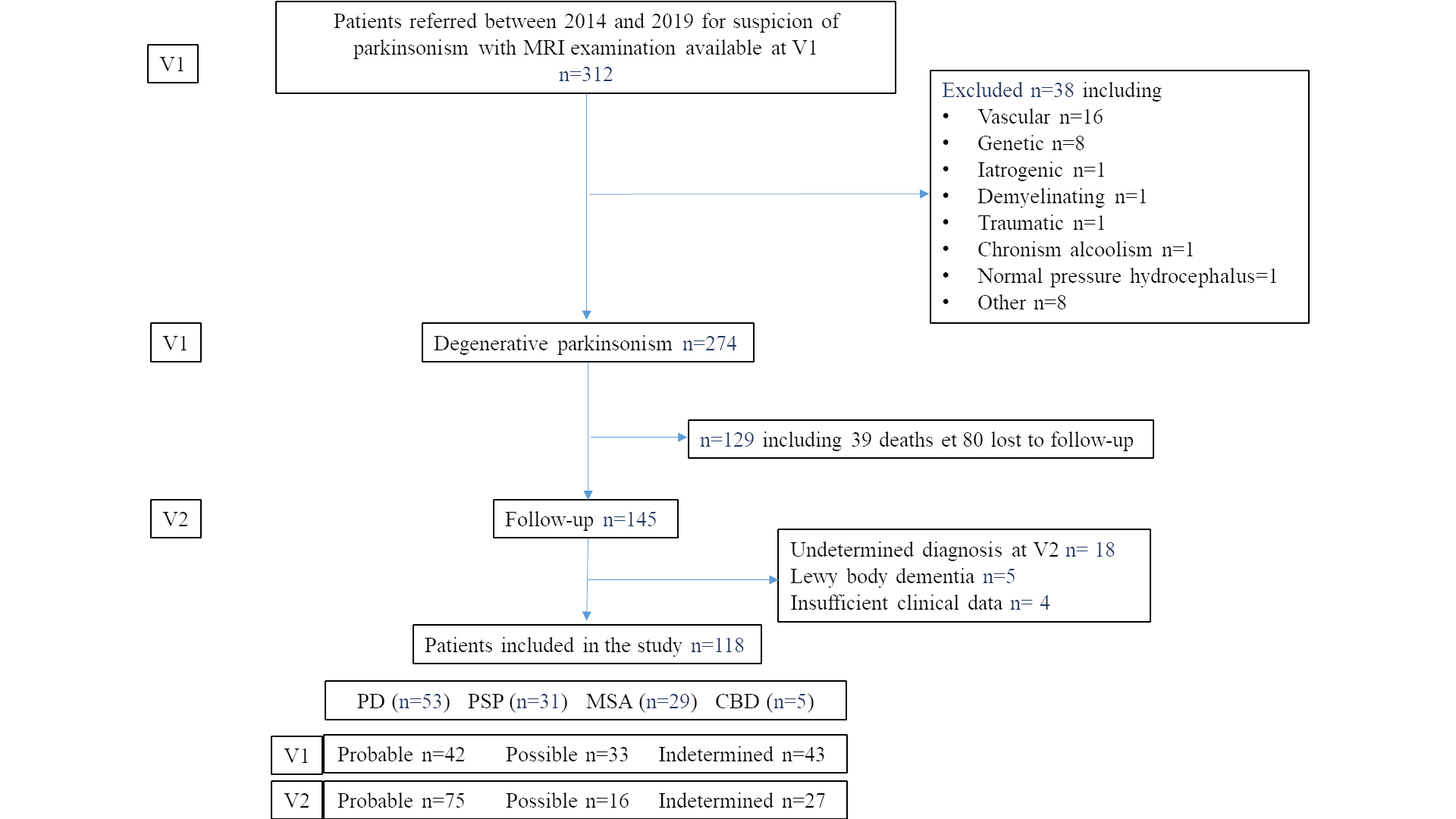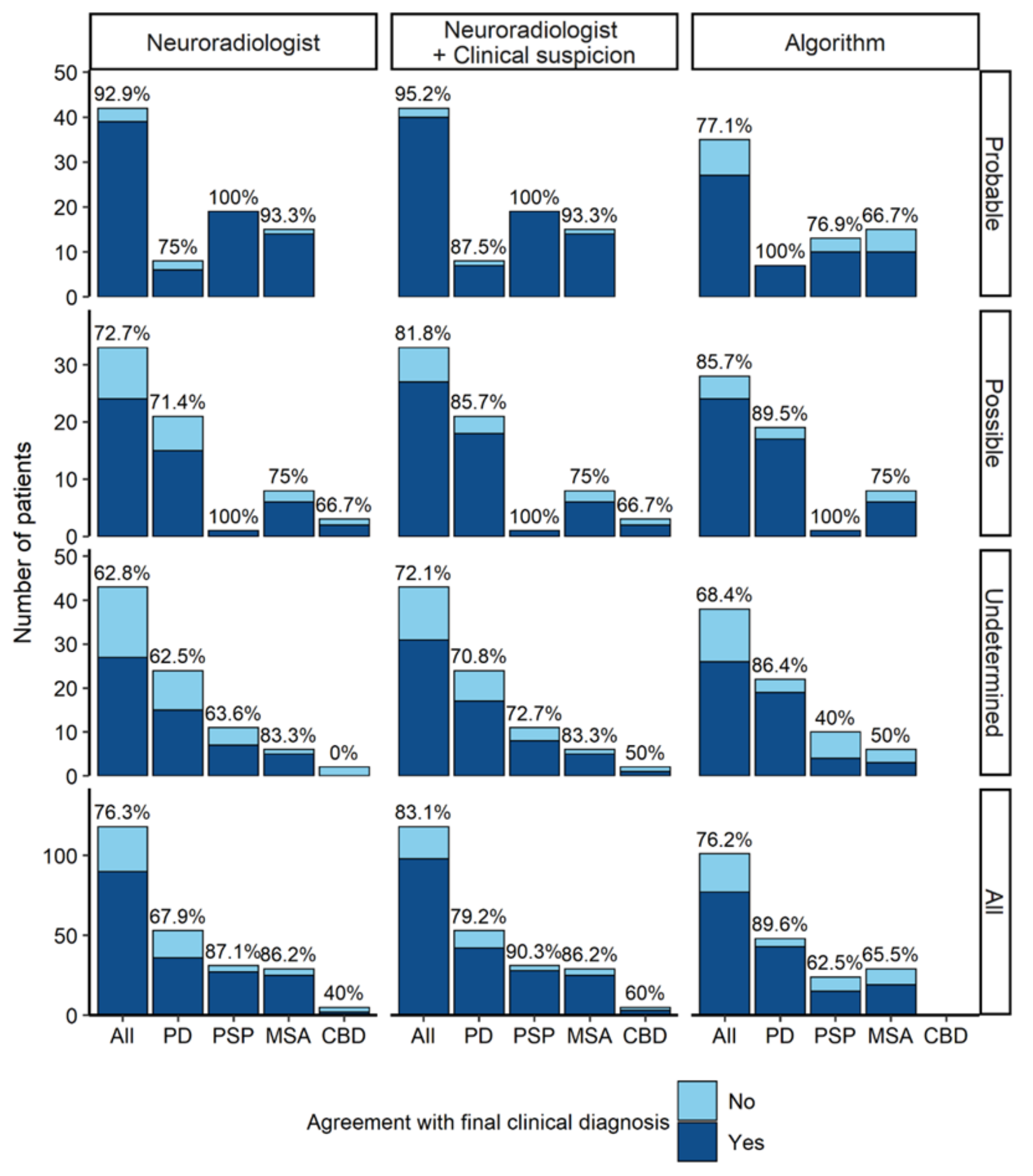Category: Parkinsonism, Atypical: MSA
Objective: To determine whether MRI and machine learning approaches improve diagnostic accuracy in patients with early-stage parkinsonism compared to clinical criteria
Background: Parkinson’s disease (PD) is the most common degenerative cause of parkinsonism. Atypical parkinsonism includes progressive supranuclear palsy (PSP), multiple system atrophy (MSA) and corticobasal degeneration (CBD). Clinical differentiation of parkinsonian syndromes remains challenging.
Method: Patients suspected of atypical parkinsonism with available follow-up and brain MRI performed at the initial visit were consecutively enrolled. Diagnoses at first visit and after a two-year follow-up were established according to published clinical criteria. An MRI diagnosis was established based on the radiological analysis of MRI images. T1-weighted images were segmented using FreeSurfer, an automatic segmentation software and volumes were extracted from regions of interest: midbrain, pons, cerebellum and basal ganglia. A supervised machine learning algorithm (logistic regression) previously developed and trained with volumes of the same regions was tested on this population. Then, we compared the diagnostic accuracy of clinical criteria at first visit, radiological MRI analysis and machine learning algorithm considering the final diagnosis as the reference.
Results: 118 patients were recruited including 53 with PD, 31 with PSP, 29 with MSA and 5 with CBD. The mean disease duration was 3.0 ± 2.3 years (Figure 1). Clinical diagnostic criteria have a diagnostic accuracy of 63.6% at initial visit. Radiological analysis of MRI correctly classified 82% of patients who met criteria for possible diagnosis and 75% of those with undetermined diagnosis at initial visit. The algorithm also confirmed the diagnosis of parkinsonism in 91% of patients with possible form and guided the diagnosis in 66% of those with undetermined diagnosis (Table, Figure 2).
Conclusion: Our results highlighted the limitations of clinical criteria and the contribution of MRI for the early differentiation of parkinsonism. Although its accuracy was lower than that of MRI, machine learning could be an aid in non-expert centers.
To cite this abstract in AMA style:
L. Chougar, A. Faucher, J. Faouzi, FX. Lejeune, F. Cormier, M. Vidailhet, O. Colliot, S. Lehericy, D. Grabli, B. Degos. Contribution of MRI and machine learning approaches to the diagnosis of patients with early-stage parkinsonism in a situation of clinical uncertainty [abstract]. Mov Disord. 2023; 38 (suppl 1). https://www.mdsabstracts.org/abstract/contribution-of-mri-and-machine-learning-approaches-to-the-diagnosis-of-patients-with-early-stage-parkinsonism-in-a-situation-of-clinical-uncertainty/. Accessed December 19, 2025.« Back to 2023 International Congress
MDS Abstracts - https://www.mdsabstracts.org/abstract/contribution-of-mri-and-machine-learning-approaches-to-the-diagnosis-of-patients-with-early-stage-parkinsonism-in-a-situation-of-clinical-uncertainty/



